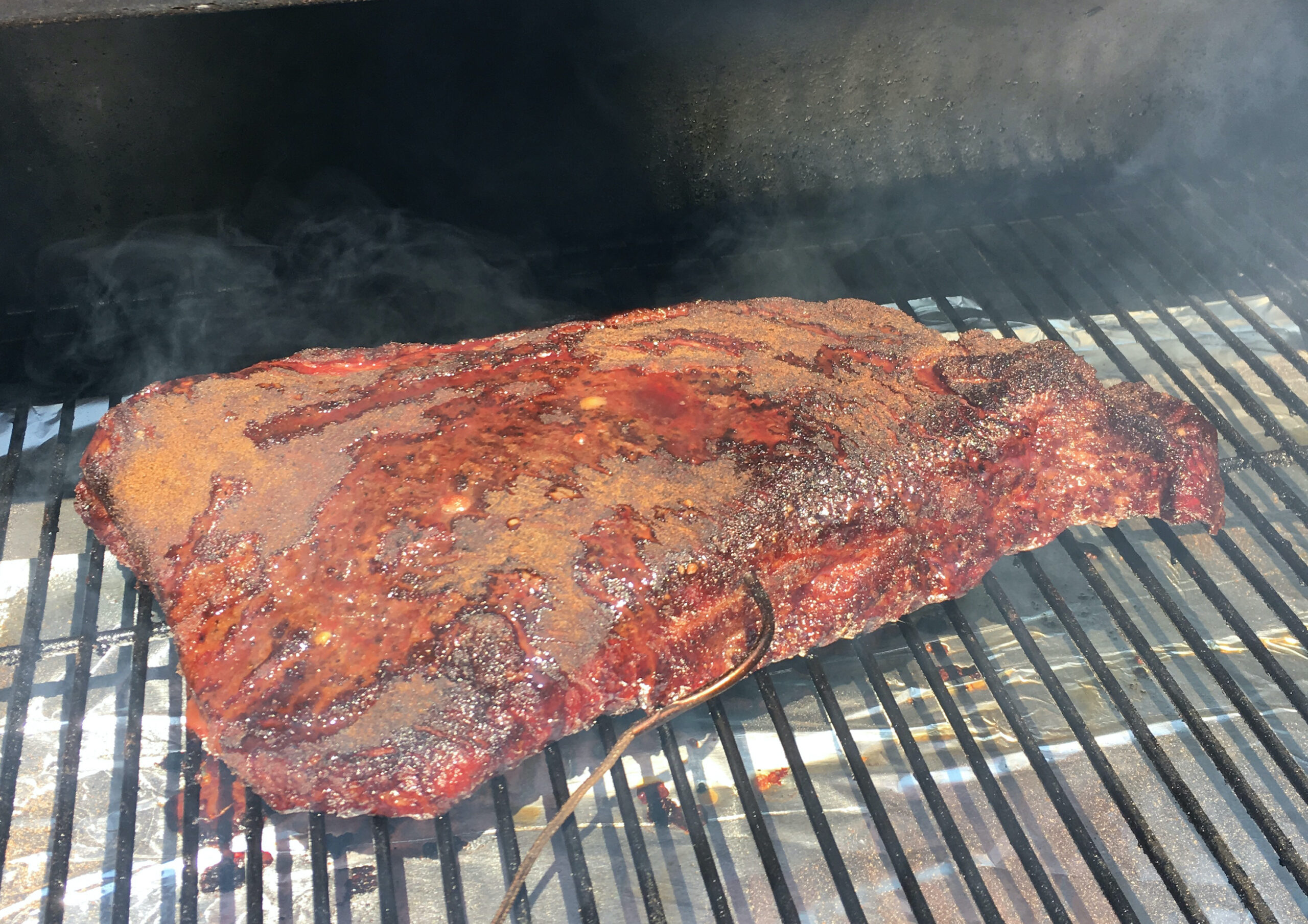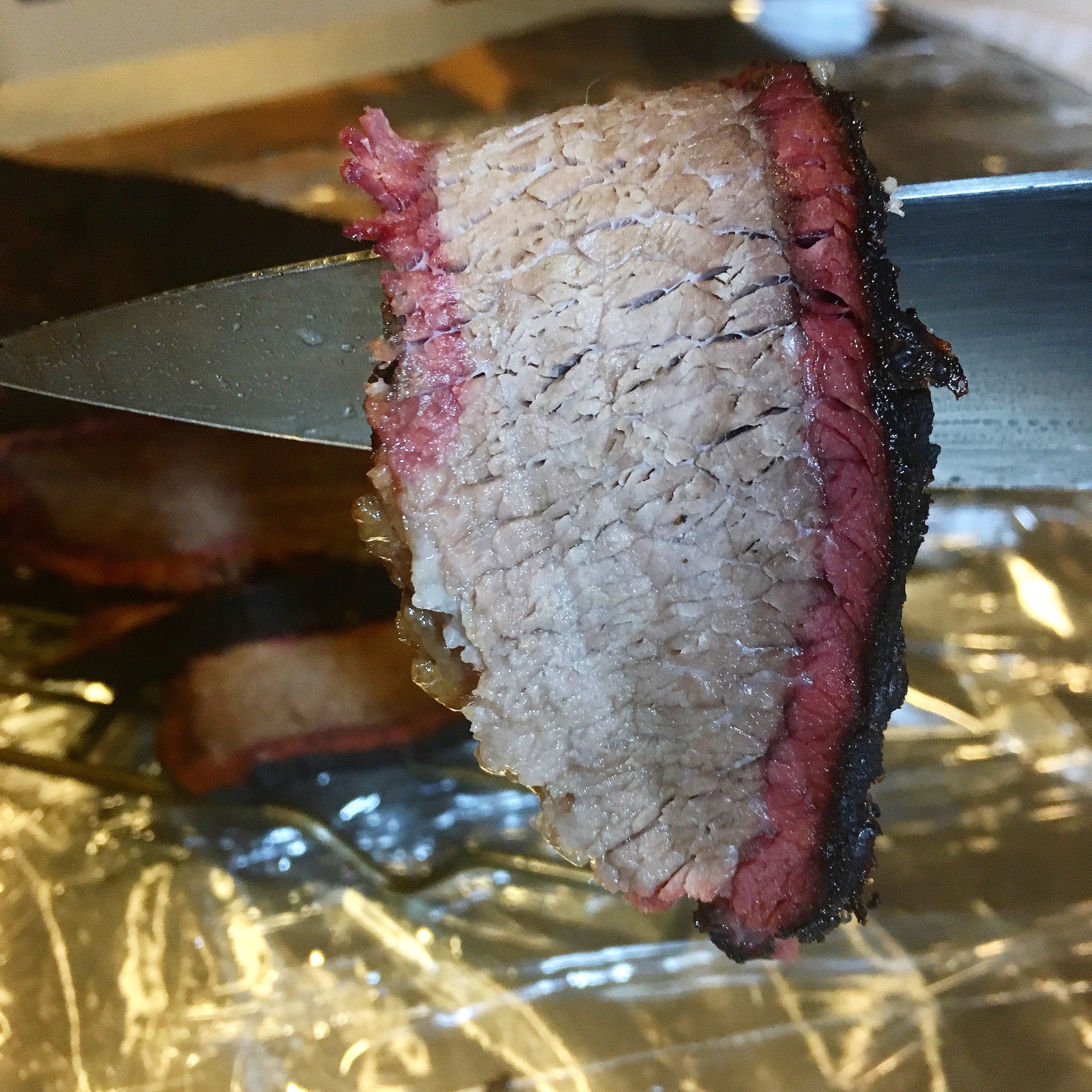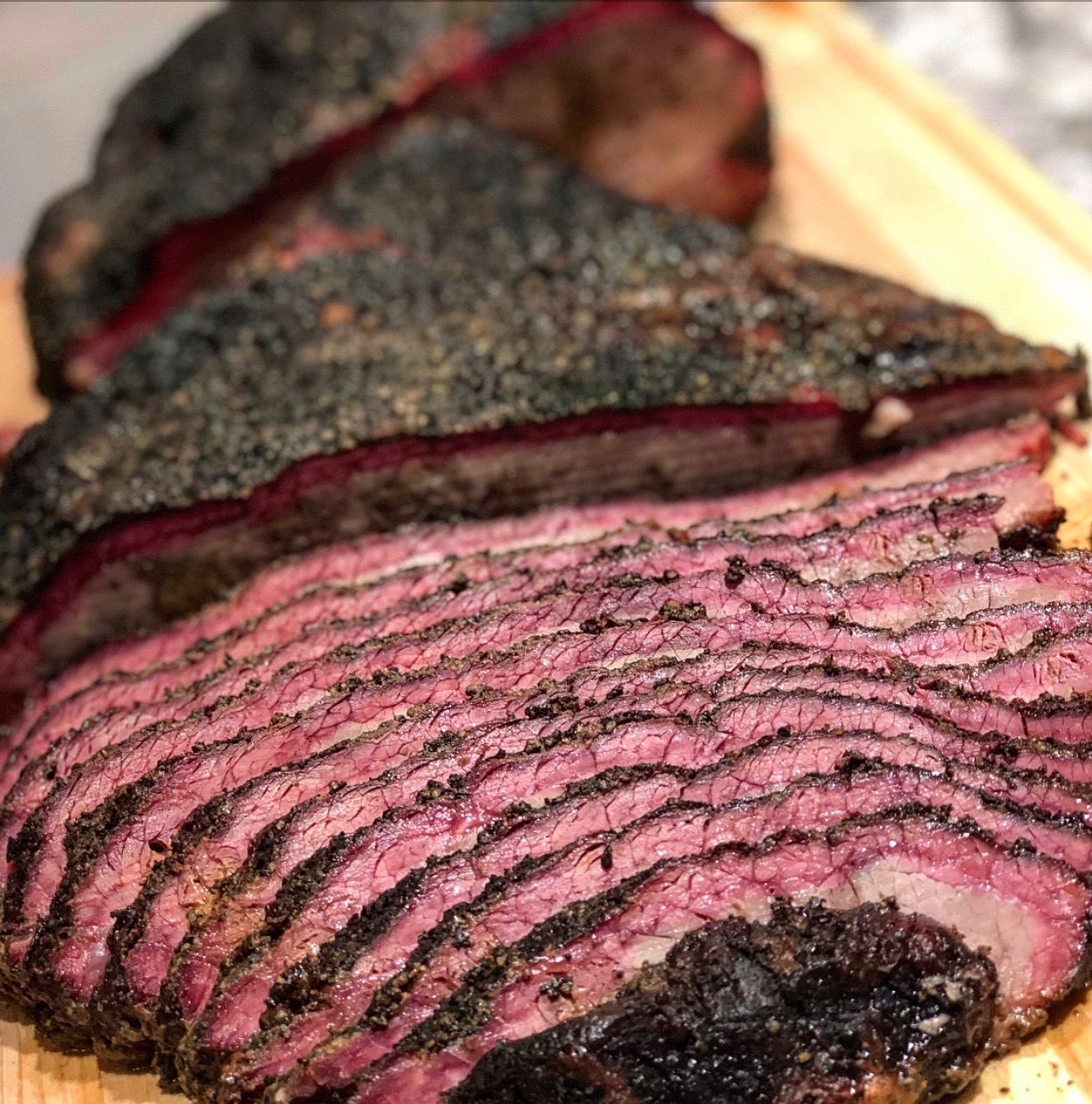Follow These Simple Beef Brisket Cooking Hacks and Make The Most Intense Brisket Just Like The Pros!
These are some of my favorite beef brisket cooking hacks you can try the next time you want to fire up the smoker and make this delicious dish.
Beef brisket is a large lump of meat that so many people are passionate about. When done properly, it has an unexplainable amount of flavor, a supple and inviting texture, with a smoke ring the color of a Santa Fe sunset.
But done wrong, (the brisket is so chewy), you will want to become a vegetarian only a few bites into it.

Brisket on the smoker
Hopefully, these simple tips will help you make better brisket the next time you fire up the smoker.
So how do people mess up a brisket even when they are following a good brisket recipe?
Good question! Let's give them the benefit of the doubt here.
Chances are they:
- Have good meat
- Seasoned it well with a good brisket rub or just salt and pepper
- Are familiar with barbecue cooking, smoking, or grilling
At the same time they are probably also:
- Overly excited
- Rushing
- Getting really hungry
Trim your brisket for better flavor
Brisket comes with an unmistakable fat cap.
Although the fat is on both sides of the brisket, one side has significantly more fat on it than the other.
Contrary to popular belief, barely any fat renders when cooking brisket. So there is little benefit to keeping the fat intact. If anything, it's a barrier to smoke penetrating and seasoning the meat during the cooking process.

Smoke ring on a brisket slice
I like to use a sharp knife to remove the fat from brisket. A good quality ceramic honing rod is something I keep nearby so I can keep my blade sharp.
Typically I will use a boning knife for removing fat from brisket and appreciate its flexibility. If you don't have one, a sharp chef's knife will work fine.
My method removes all but about a quarter-inch of fat from the brisket. This seems to be the perfect amount.
Don't be stingy with the seasoning
Most briskets I purchase are about 16 pounds. Even ones with a lot of fat (that I remove) still weigh in at about 10-12 pounds after trimming. This is a lot of meat and requires a good amount of seasoning to enhance the beef flavor.
Pitmasters swear by seasoning brisket with a 50-50 mix of salt and pepper.
Salt and pepper is classic, affordable, and gets the job done. I like to mix 1 cup of each yielding 2 cups of the blend for seasoning my brisket.
But if you want to be slightly more adventurous, consider adding other seasonings to the mix as well to enhance the brisket flavor.
Some of my favorites are:
Whatever you go with, use a liberal amount of seasoning on the meat and stay away from anything with sugars or other sweeteners. They have a tendency to burn when cooked for a long period of time.
If you want a crunchy and delicious side dish to go with your brisket that is easy to make check out this Pickled Red Onion recipe from Matt at GrillSeeker.com
So what's the secret to getting your brisket tender and insanely delicious?
The secret to getting brisket extremely tender and insanely delicious is to slowly cook it to an internal temperature of 203F-205F.

Beef brisket with a nice smoke ring from GrillSeeker.com
Most brisket recipes call for you to cook brisket to 198F but this is not good enough.
Taking the brisket to 203F or better yet all the way to 205F if cooked slowly over low temperatures will almost guarantee the brisket will be both tender and flavorful.
Since we are often striving to have our beef cooked rare, medium-rare, or medium, sometimes the thought of cooking beef to this high of a temperature is counter-intuitive to what we are normally after.
When the cooking's done it's time for a break
Eighth-grade science class will teach you about energy in and energy out. There is a lot of energy that gets pumped into the brisket via the smoker which makes it deliciously cooked to perfection.
Many brisket aficionados swear by letting the meat rest after cooking to make it even more tender.
If you want to let the brisket rest, all you need is some good quality foil and an insulated cooler to store it in.
Snugly wrap the brisket in two layers of foil so no juices will escape. I sometimes like to wrap that in a beach towel and then it gets placed in a cooler. The same insulation which keeps food cool inside a cooler can also keep it warm.
A brisket that sits in a cooler this way will still be plenty hot after as many as 4 hours resting.
Slice across the grain for optimum tenderness
After all this work there is one final touch that should be considered.
Slicing.
Find the direction the grain is running in the meat. Usually, it runs at an angle from one of the corners and continues on across the entire brisket. You want to be sure to cut across or perpendicular to the grain of the meat.
Using a sharp knife makes all the difference in achieving clean slices when cutting brisket.
While the brisket is smoking I will often sharpen my slicing knife with the WorkSharp E4. Keeping a sharp knife prevents the delicate meat from tearing while I am slicing.
Did you know that beef isn't the only brisket around? You can also make delicious pork brisket and it's totally worth trying.
Have you ever wanted to get a trained chef's perspective on cooking a brisket? If so, check out this article and interview with Chef Shane about how cooking brisket is a true test of one's patience.
Hopefully, some of these brisket cooking hacks will help you the next time you have a taste for this delicious smoked treat!


Comments
No Comments